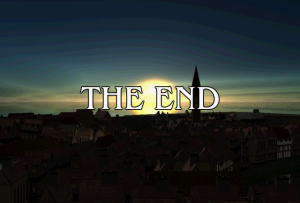Since the clean-up work on NihAV is done and I progress with Truemotion VP3 decoder, it’s a good time to talk about what I’ve actually done—there’s even more material to write waiting in the queue.
The intent was to make all frame-related stuff thread-safe and improve efficiency a bit. In order to do the former I had to replace most of the references from Rc<RefCell<T>> to Arc<T> and while doing it I introduced aliases like type NAFrameRef = Arc<NAFrame> and .into_ref() methods to convert object into ref-counted version. This helped when I tried switching from one implementation of reference counter to another and will make it easy to switch again if I ever need that (hopefully not). Now about improved efficiency and how it’s related to the ref-counting.
There’s a straightforward way of dealing with frames: you allocate the picture, fill it, dispose, allocate a new one, etc etc. And there’s a more effective way: you allocate several pictures at once, select an unused one, fill, return to the pool when it’s not needed any more. That is where reference counting comes into play and where Rust default structures don’t help. Frame pool owns the reference and decoder gets a second copy. And Rust Arc is intended for single ownership: when you try to access the shared object it will simply clone it so you end up working with a copy (which defies the purpose). So I had to NIH my own NABufferRef<T> which keeps reference counts and still allows shared access even for writing (currently it does that in all cases but if I need to add some guards the API won’t have to be changed for that). The implementation is very simple: the structure contains a raw pointer to a structure that contains actual object and AtomicUsize counter. The whole implementation is ~2.2kB relying just on std crate.
And finally I’ve made a picture pool. The difference between picture and frame is all additional metadata picture should not care about (like timestamps, stream information and such). Because of the design decisions I have three different picture formats (implemented for 8-, 16- and 32-bit element sizes, Rust does not like aliasing after all), which means I need to provide decoder with all three picture pools because we can’t say in advance which one codec will use (if at all—the option to allocate new non-pooled pictures is still there). Also I want to keep those pools external in case the code around it wants to do keep more pictures in it (e.g. 2-3 pictures required by decoder and 25 pictures pre-buffered for the display). This resulted in a structure called NADecoderSupport that contains picture pools and may have something else added late. Of course people might argue that it’s much better to have AVCodecContext with a myriad of fields you can set directly or via utility functions but I’d rather not have one single structure. Though it might be a good place to put various decoder options there (so that decoder can ignore them at its leisure).
Since I said I did it to increase efficiency I should probably give some numbers too: RealVideo 3/4/6 decoders now use buffer pool (for three frames obviously) and reallocate it on format change. Decoding time got reduced by 4-5% from using the pool. Currently I don’t care about speed much but I may convert more decoders to it if the need arises.
In conclusion I want to say that even I did not enjoy doing that work much, it was needed and gave me some experience plus some improvements in code and design. So it was not a wasted effort.
P.S. I also installed rust-clippy since it’s in stable now and tried to fix errors and warnings it reported. But that is a story for another post.

